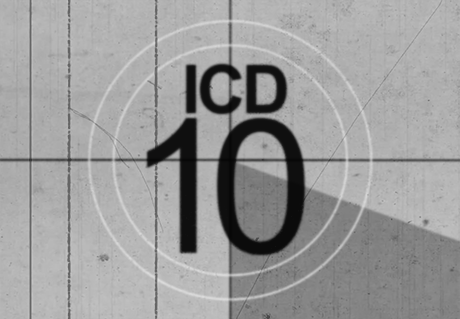ICD-10- How will it change EMS Documentation?
117 Days and Counting!
Change is coming. Today is exactly 117 days away from the October 1st implementation of the ICD-10 diagnosis codes.
 ICD stands for the International Classification of Diseases. Today, our industry uses Version 9 of the code set to report conditions when we submit claims for payment of ambulance transportation. Come October 1st, we’ll be mandated to use the next version, Version 10, which is used throughout the rest of the civilized world.
ICD stands for the International Classification of Diseases. Today, our industry uses Version 9 of the code set to report conditions when we submit claims for payment of ambulance transportation. Come October 1st, we’ll be mandated to use the next version, Version 10, which is used throughout the rest of the civilized world.
“You’re the biller…”
You’re reading this and the first thing that comes to your mind is… “What do I care about ICD-10? You’re the biller and that’s what we hire YOU to do!”
In part, you’re right. That is what you’ve hired us (the billing office) to do for you. However, this ICD-10 transition is more than just picking codes. The entire structure and theory behind all of this is a massive underlying move to a more robust and detailed method of monitoring and tracking physical conditions, ailments and emergencies. The healthcare industry is being dragged, kicking and screaming, into a data-driven model and ICD-10 is a really big step in this paradigm shift.
Changes for you
For months now, we’ve been talking via this space about the need for greater detail. It’s not just an ICD-10 “thing” but detail becomes all the more important in the ICD-10 environment.
Detail and location, plus mechanism and whether there is sufficient documentation about all three elements is going to become more important than ever for your billing office to be successful in achieving the ultimate coding mix to get your EMS agency’s claims paid for the stuff you do out there on the street.
For this post today, we’ll look at detail and mechanism. Next week, we’ll tackle the location element.
Detail
Come October 1, 2015 there will be no choice but for you to include as much precise detail along with clear clinical findings and results in your documentation. When preparing the Patient Care Report that represents your EMS incident, it will be imperative that you nail things like types of injuries, the body location of those injuries or illnesses and include both the location and also the mechanism of the injury.
General, vague descriptions void of any specific detail noted from the result of your assessments and insight will just not cut it.
For example, don’t just make a statement the patient complained of pain. Qualify and quantify it.
When did the pain start? What brought about the pain? Document the number on a one-to-ten scale the patient rates the pain. You’ll be documenting quality words that the patient used to describe the pain and you’ll be recording in your PCR all relevant findings from your assessment such as if the pain radiated and what associated signs and symptoms the patient presented to you with.
If the pain is a result of a traumatic injury, what was the mechanism that contributed to the injury? Was there penetrating and/or blunt force trauma involved? Was machinery or the environment to blame? Of course, we can go on and on forever because there are limitless possibilities.
So the difference becomes something like…
Sample A – “Arrived on scene to find a 60 year old patient complaining of severe abdominal pain. The pain was located in the center of the patient’s abdomen causing him extreme discomfort.”
-Versus-
Sample B – “Arrived on scene to find a 60 year old patient complaining of severe abdominal pain which the patient rated as a 9 on a 1-10 severity scale. The patient stated the pain was a sharp, stabbing pain just proximal to the navel area. Upon palpation, we noted some slight pulsation and the overall abdomen was distended and very rigid. Our assessment revealed in the patient complaining of pain radiating to the right flank area with some associated pain moving to the patient’s back.”
Note the difference in the two documentation samples. Sample B allows the billing office ample information for future use of the ICD-10 coding structure while Sample A does not.
Get Started Today!
There’s no time like the present to improve your PCR documentation! Get started today!
Next week we’ll provide some more examples of how to incorporate location and mechanism into your overall documentation techniques.
